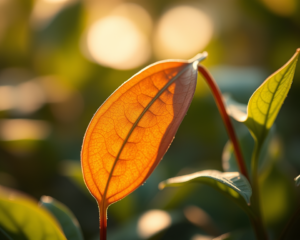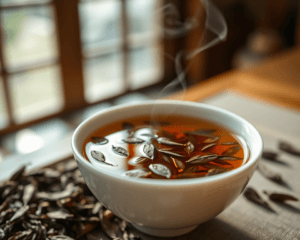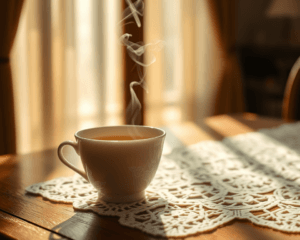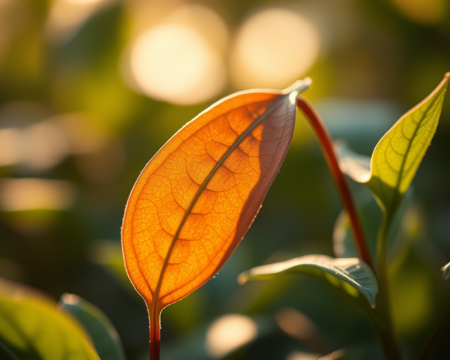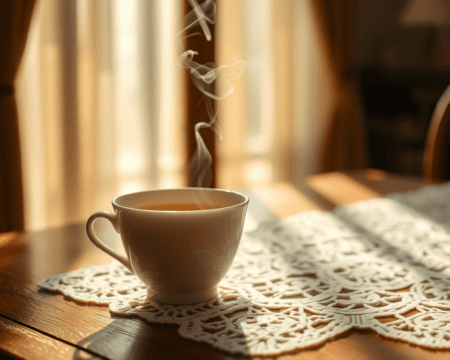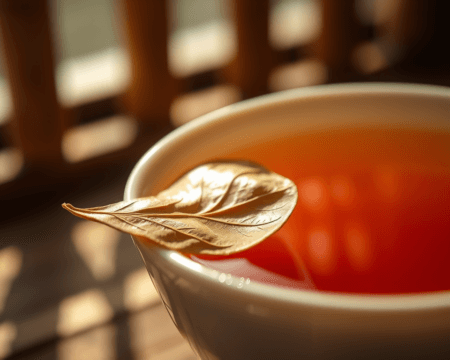Saffron tea—that golden brew that not only tantalizes your taste buds but also packs a punch in the health department. If you’ve ever wondered how to whip up a cup of happiness in a mug with a splash of elegance, you’re in the right place. Saffron, derived from the Crocus sativus flower, is one of the most coveted spices globally—prized for its vibrant color, unique flavor, and impressive history. Brew it right, and you’ll unlock a symphony of aromas and flavors that’ll elevate any tea time.
Key Takeaways
- Saffron is a luxurious spice with rich cultural significance and numerous health benefits.
- Preparing saffron tea involves just a few quality ingredients and precise steps.
- You can get creative with flavors, adding herbs, spices, or sweeteners for your perfect blend.
- Quality saffron is key—how you source it can make or break your brew.
Introduction to Saffron Tea
What is Saffron?
When you hear the word saffron, think luxury. Think exotic. This spice isn’t your everyday garden variety; it’s the dried stigma of the saffron crocus flower—growing in areas like Iran, India, and Spain. Saffron cultivation is meticulous work; it takes about 150,000 flowers to produce a single kilogram of saffron. That’s right—no shortcuts here!
Saffron boasts a complex array of aromatic characteristics, often referred to as floral, earthy, and slightly sweet. Not to mention, its culinary saffron qualities elevate dishes from paella to risotto. But we’re talking about tea today, so let’s focus.
Health Benefits of Saffron
Why bother brewing saffron tea? This golden elixir is not just pretty—it’s bursting with health benefits. Rich in antioxidants, saffron is linked to heart health and improved digestion. Did I mention it can give your mood a boost? Studies suggest saffron can help combat depression and anxiety. It’s basically your sip of serenity.
In addition to its positive effects on mood, saffron tea can help with inflammation and support your overall wellness as a herbal remedy. You’re not just indulging in a flavor experience; you’re doing your body a favor!
Step-by-Step Guide to Making Saffron Tea
Ingredients You’ll Need
So, you’re ready to make some saffron tea? First things first, let’s gather our ingredients. You’ll need saffron strands, warm water, and any additional flavors (think honey, lemon, or even a splash of milk) you want to enhance your tea experience. The quality of your ingredients is crucial. Don’t skimp on the saffron—look for premium saffron strands, preferably with a rich crimson color, which indicate better quality.
Preparation Steps
Now, onto the fun part—brewing your saffron tea! First, heat up about one cup of water. The temperature is important; you want it near boiling but not bubbling like a hot spring. While that’s heating, take around 10-15 saffron strands and put them in a small bowl or cup. Pour a few tablespoons of that warm water over the strands and let them steep. This helps to release their color and flavor.
Let it steep for about 10-15 minutes. That waiting period is key—be patient! Now you can add the infused water back into your cup and toss in a bit more hot water to taste. Sweeten your tea with honey or a splash of lemon if you like. The goal is to achieve a balance that suits your palate perfectly. Enjoy it hot, ortry it iced with a twist of citrus for a refreshing summer drink.
Flavor Variations and Additions
Creative Variations of Saffron Tea
Let’s get creative! You can take your saffron tea to the next level. Ever tried a saffron chai? Just add some chai spices—cardamom, ginger, maybe a sprinkle of cinnamon. You’ll transform your cup into a flavorful journey. And for those hot summer days, how about an iced saffron tea? Brew it strong, chill it down, and serve it over ice for a refreshing treat.
Ingredients to Enhance Your Saffron Tea
Once you’ve got the basics down, think about enhancing your tea. Add milk for a creamy touch, or squeeze in some citrus for brightness. Got any herbs lying around? Basil, mint, or even a hint of lavender can elevate your experience. The key is experimentation—mix and match to find your perfect blend!
The Cultural Significance of Saffron Tea
Saffron Tea in Different Cuisines
Saffron tea isn’t just a drink; it’s a cultural ritual in various cuisines. From Persian tea ceremonies to Mediterranean gatherings, each culture has its unique way of preparing and enjoying saffron tea. In some traditions, it’s served alongside sweets, while in others it’s enjoyed during social or family events. The history of saffron is rich and rooted in ancient practices, symbolizing wealth and prestige.
Sourcing High-Quality Saffron
Last but definitely not least, let’s talk about sourcing high-quality saffron. You can’t just grab any old saffron off the shelf. Look for brands like Saffron King or Zaran Saffron, known for their authenticity and quality. When purchasing, keep in mind the saffron grading. Look for suppliers who can provide information about their saffron’s origin and specifications. This isn’t just spice shopping; this is about investing in quality.
In the end, whether you’re brewing a cup for relaxation or socializing with friends, saffron tea is an experience worth having. It’s a beautiful fusion of flavor, health, and culture right in your cup. So gather your saffron, heat that water, and create something magical. You won’t regret it!
Frequently Asked Questions
What are the health benefits of saffron tea?
Saffron tea is known for its potential health benefits, including improving mood, reducing symptoms of anxiety and depression, and providing antioxidant properties. It may also aid in digestion and enhance your overall well-being due to its rich micronutrient content.
How do I choose quality saffron?
To choose quality saffron, look for deep red threads with a slightly yellow tip. Avoid saffron that appears too bright or overly dry, as these may indicate lower quality. Consider buying from trusted sources or brands known for their purity and adherence to quality standards.
Can I add other flavors to saffron tea?
Absolutely! Saffron tea is versatile. You can enhance its flavor with herbs like mint or basil, spices like cardamom or cinnamon, or sweeteners such as honey or agave syrup. Experimenting with these additions can create a unique blend to suit your taste.
How should I store saffron to maintain its quality?
To maintain saffron’s quality, store it in a cool, dark place in an airtight container. Avoid exposure to light, moisture, and heat, which can degrade its flavor and potency. Ideally, use it within six months to a year for maximum freshness.
Is saffron tea safe for everyone to drink?
Saffron tea is generally safe for most people when consumed in moderation. However, pregnant or nursing women, individuals with certain medical conditions, or those on medications should consult a healthcare professional before adding saffron tea to their diet.
How do I prepare saffron tea correctly?
To prepare saffron tea, steep a few saffron threads (about 5-6) in hot water for 5-10 minutes. This allows the threads to release their color and flavor. Adjust the steeping time according to your preference for a stronger or milder taste.
How much saffron should I use for one cup of tea?
Typically, 5-6 threads of saffron are sufficient for one cup of tea. Adjust the amount based on your taste preference, but be cautious as saffron’s potency is strong, and too much can lead to bitterness.
Can I reuse saffron threads for more tea?
Yes, you can reuse saffron threads to brew another cup of tea, although the flavor and color may be less intense. It’s usually best to use fresh threads for optimal taste, but reusing can still provide a subtler saffron experience.
What if I don’t have saffron but still want to make a similar tea?
If saffron isn’t available, consider using turmeric or chamomile as alternatives for a soothing herbal tea experience. While they won’t replicate saffron’s unique flavor, they can offer satisfying and fragrant tea options with their own health benefits.
